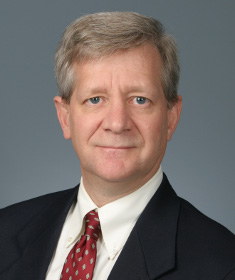Sales versatility in the pharma industry
Connecting with customers every time

One of my clients, an experienced sales manager, was working with a newly hired rep who was used to building social relationships with physicians by providing everything from free samples to free lunches. Now, he was being asked to leverage his in-depth product knowledge to focus on patient benefits. "I've put together a great presentation," he told his manager, "with a lot of our data on efficacy and outcomes and comparative study results to demonstrate our advantages. But yesterday, about half-way through, this one health care provider is looking at her watch and then she says she's got another meeting and can I just tell her quickly what our product actually does for patients. I thought I was telling her." The manager suggested cutting back on the amount of data and making sure outcomes for patients are right up front. "O.K., I can try it" the rep said, "but in my very next call, the doctor was really into the research and asked a lot of questions and seemed to want even more detail about the studies. So, it's hard to know what's best."
As a sales leader, you also may have noticed how much easier it is for salespeople to connect with some physicians more than others. Sometimes the same approach that was successful in one case was completely ineffective in another. And some established relationships end up being downright difficult — fraught with tension, frequent communications issues and misunderstandings for reasons that are hard to understand.
In all these situations there appears to be a common theme — inconsistency and a certain lack of predictability. The reasons for success can sometimes seem as mysterious as the reasons for failure to connect. But the ability to consistently build productive, trusting relationships with many types of clients is the best predictor for getting second appointments, closing important sales, acquiring referrals from established clients and avoiding the wasteful process of damage control in rocky relationships.
What is it that makes the difference between those successful communications and the difficult interactions that lead to failed calls and sales campaigns?
Connecting Through Versatility
At first glance, some salespeople just seem to have a knack for reducing relationship tension and quickly putting almost anyone at ease in any situation. They gain access more easily and enjoy greater client loyalty, higher close rates and more repeat business. They are often described as possessing good "people skills" — apparently inborn and hard for others to acquire.
Wilson's Social Styles theory suggests that these fortunate few are so successful because they are using interpersonal versatility — the ability to understand differences in communication preferences and adapt to make relationship interactions more productive. Versatility is a skill that can be learned, and salespeople who have it are measurably more capable of building and sustaining open, trusting relationships with a wide variety of different kinds of clients
The Social Styles model tells us that we all possess a recognisable pattern of preferences and habits in our interactions with others. These preferences add up to our social style. The four primary styles are labelled as Driver, Expressive, Amiable, and Analytical.

As the model shows, the four styles vary in terms of behaviours reflecting the dimensions of Assertiveness (Tell) versus Responsiveness (Ask) and People versus Task orientation. Drivers and Expressives tend to be more Tell oriented, while Amiables and Analyticals are more Ask oriented. Analyticals and Drivers are more Task oriented, while Amiables and Expressives are more People oriented.
When salespeople find it easy and natural to communicate with a physician, the likelihood is that they share the same social style. But only about 25% of people fall into each of the social style categories. This means they will likely share a social style with only about one quarter of the clients and contacts they meet — and that there could be potential difficulties in communicating with the other 75%.
Think of the implications in terms of the ability to connect with health-care providers. If a salesperson is interacting with everyone in the same style, there's a good chance there will be physicians who, as in the story of the new rep, will feel they are being given too much information. Others might feel it is too little. Some could find the salesperson to be overly friendly, while others might perceive him as aloof or not friendly enough. Other clients prefer different treatment options and alternative approaches to consider, while others want to cut to the chase and know the bottom line recommendation right away. These differences in preferences and reactions are directly attributable to social style differences. Using awareness of others Social Style will help to reduce barriers and obstacles that can derail valuable time with key customers.
Versatility as a Sales Driver
In the current health care market, it's difficult for sales leaders to manage all the variables affecting sales. You may have little control over the external factors affecting a practice or the strategies adopted by your own company in response to rapid change. You can, however, act to help your entire sales team become more versatile in how they interact with prospects, clients, their internal support team and their peers. Imagine the results if your whole team could connect successfully with 100% of the prospects and clients they meet.
The good news is a sales team can experience dramatic, measurable improvements in performance when salespeople learn how to adapt to others' social styles. In one study, a pharmaceutical firm achieved a 53% improvement in market share by building the versatility skills of its sales force. To illustrate the impact of this kind of result, consider a company with 6.29% market share. Suppose it has 1,000 customers, each purchasing $1,000 in product, making each one-percent increase in market share worth $158,982. In this example, an improvement from a 6.29% market share to a 9.65% market share (or 3.36%) is equal to $534,179 in increased revenue. Improving the versatility of their sales force brought a highly profitable return on investment.
What are the critical issues that are most important in your firm right now? If your organisation is employing new sales strategies to comply with recent changes in industry regulatory standards, or seeking to expand into new markets and develop new business relationships with a greater number of practices, hospitals or managed care organisations, versatility can make all the difference in achieving these goals.
Increasing Versatility
How do salespeople become more versatile in their interpersonal style? Since interpersonal behaviours and preferences are usually habitual and out of awareness, the most powerful factor is the insight that we all have different styles and that each style has its own special strengths.
As salespeople come to better understand their own style and recognise differences, they also learn how to respond to their clients' styles in a way that makes it easier to convey the right information, negotiate agreements that close sales as well as facilitate smooth implementation and follow up. Over time, as they develop higher levels of skill, salespeople learn how to quickly recognise different styles and adapt to them. This adaptation becomes second nature — resulting in those "good people skills" that make them trusted business partners and successful negotiators. As salespeople find they must work harder for every sale, building this kind of capability provides a real competitive advantage for the team and the firm as a whole.
To learn more, contact Wilson Learning Worldwide | Phone: +44.1494.678.121 | Email: info@wilsonlearning.co.uk








 Please complete this form to download Sales versatility in the pharma industry | Connecting with customers every time.
Please complete this form to download Sales versatility in the pharma industry | Connecting with customers every time.



